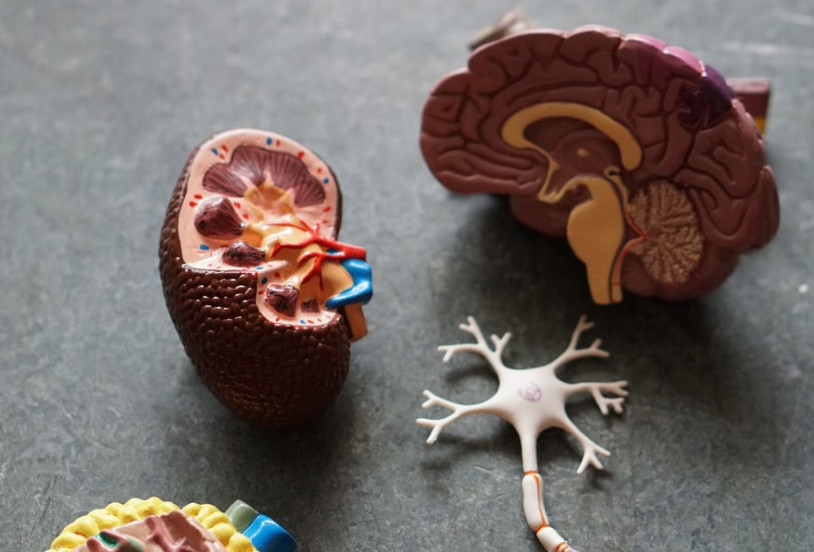Kidney Disease in Cats – A Common Problem
Studies have reported that 30% of geriatric cats have long-term kidney failure. However, I strongly believe that number is too low and that the condition is often under-diagnosed.
I believe that if cats lives long enough, well in excess of 90% will show some degree of loss of kidney function. Let’s dive into the symptoms and treatment of chronic kidney disease in cats, among other aspects of this common problem.
If you love cats, kidney disease is something you will want to be familiar with.
What Do Kidneys Do?
Kidneys play a vital role in our lives – they are responsible for:
- Water conservation
- Toxin removal
- Balance of calcium/phosphorus and sodium/potassium
- Blood pressure regulation
- Protein conservation
- Red blood cell production
- pH balance (acid/base balance)
What Is Chronic Kidney Failure?
Chronic kidney failure (CKF) may also be called chronic renal failure (CRF), chronic renal insufficiency (CRI) or chronic kidney disease (CKD). All refer to a long-term gradual loss of kidney function. Like people, cats can lose one kidney and still have adequate renal (kidney) function because the remaining kidney can work harder to process waste. This is why the gradual loss of renal function is often not noticed at first. There is a threshold where the loss of function starts to impact a cat in ways that would be noticeable to her guardian. However, cats are highly stoic individuals and it takes fairly dramatic internal changes for them to actually show symptoms.
Chronic kidney failure is common and distinct from the less common acute (meaning sudden onset) kidney failure. Acute kidney failure might occur from a sudden insult like drinking antifreeze or having a kidney stone, for example.
How Is It Diagnosed?
Checking renal function is one of several important reasons to consider an annual blood panel for your cat. The primary tools for diagnosis of CRF are a blood panel and urinalysis. Traditional laboratory tests for kidneys in cats often do not first detect problems until there has been a loss of two-thirds of function. Newer tests can detect renal function loss earlier, but the fact still remains that by the time we can detect abnormalities, a lot of damage has occurred.
What Causes It?
Possible causes for CRF range from various types of infections to metabolic and endocrine (hormonal) disorders. In cats, the initiating cause is often unknown. By the time a cat is diagnosed with CRF, the condition has been present for at least three months, but often much longer than that.
What Are The Symptoms?
Symptoms vary according to the severity of disease. In the early stages, there may be nothing visible. As the condition progresses, increased thirst and urination will be noted. Later, weight loss and decreased appetite will occur, leading to lethargy, vomiting and a variety of other symptoms.
How Is It Treated?
Treatment depends on the stage and severity of the disease. Medications are based on laboratory values, blood pressure monitoring, and symptoms noted. Sometimes owners can learn to do subcutaneous fluid therapy at home (see links at the end of this article). CRF is a progressive disease, but a well-managed cat can often live with it for years.
Is Diet Important?
Cats are built to get their water out of their food, and are also made to be on low carbohydrate diets. Water intake is critical for cats that are in renal failure. Dry food/kibble is completely inappropriate for any cat, and for a cat with CRF, eating dry food is a “recipe” for disaster. Fluids are critical for cats in renal failure.
There are prescription renal diets for cats that, in the canned formulation, can help slow and manage the progression of the disease. Often these diets are not as palatable for cats as regular canned cat food, so that needs to be taken into consideration. However, it’s worth trying a can of the prescription diet, if your veterinarian thinks this is appropriate to try. I do strongly disagree with the concept of dry kibble prescription renal diets, even though they are available (see the link in the above paragraph).
Finally, for those with the desire, a home-prepared diet can be beneficial as well. However, the diet needs to be balanced, and appropriate for a cat in chronic renal failure. You will need to utilize the services of a site like balanceit.com or petdiets.com. You should communicate with your veterinarian if this is what you plan to do, and their approval will likely be required for you to get the appropriate diet recipe(s).
Can It Be Cured?
The only cure for CRF in cats is a kidney transplant, which is available in a few locations in the world. Transplants are costly and present ethical issues since a feline kidney donor is not able to give consent. Additionally, there is the risk that the donated kidney will be rejected.
A Complicated Topic
This has been a brief summary of a complex, important topic for cat lovers. I encourage you to visit the Feline CRF web page for further information, www.felinecrf.com. Another excellent resource is Veterinary Partner.

Thank you ! This is clear and very helpful.
One possible result of long-term loss of kidney function in cats is constipation. Many folks would not expect this, so it’s something to watch for.